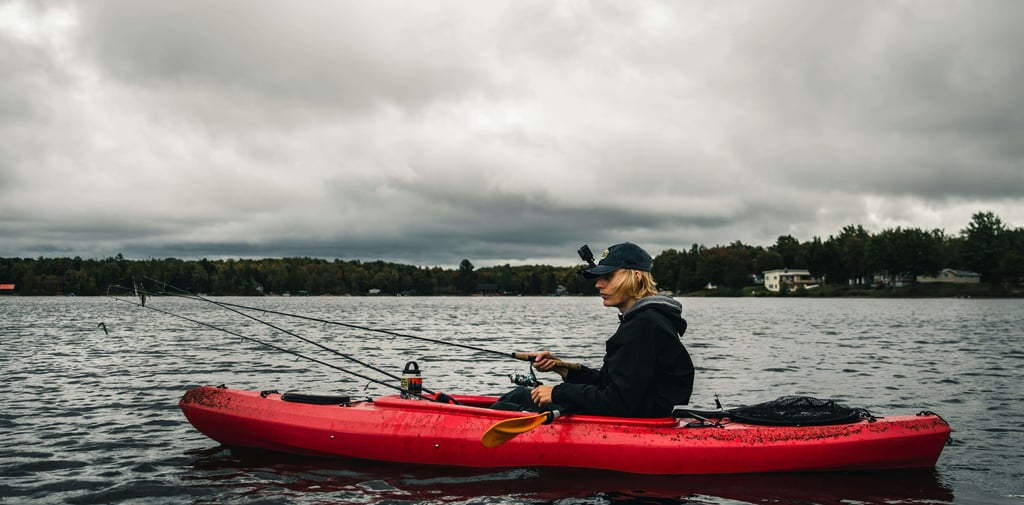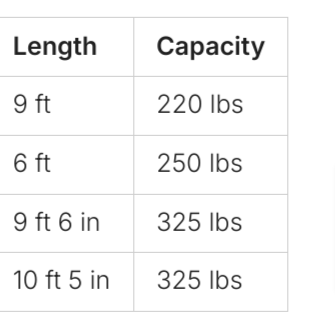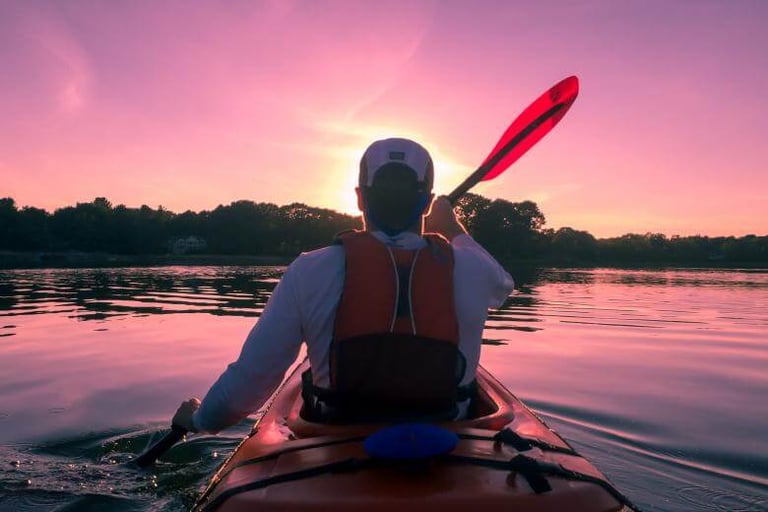How to Choose the Best Fishing Kayak for Beginners
Looking for the best fishing kayak for beginners? Discover essential features, top recommendations, and expert tips to help you choose the perfect kayak for your first fishing adventures
KAYAK FISHING
Z-men
12/3/20248 min read


Are you new to fishing and want to try it from a kayak? Choosing the right beginner fishing kayak is key to enjoying your time on the water. With so many options, it can be hard to know where to start. This guide will help you find the top-rated fishing kayaks for beginners that fit your needs and budget.
When looking for affordable fishing kayaks for beginners, focus on durability, stability, and ease of use. You want a beginner-friendly fishing kayak that builds your confidence and sparks a love for fishing. We'll look at the latest and most trusted kayaks to kick off your fishing adventure.
Understanding Fishing Kayak Basics
The world of fishing kayaks has changed a lot in the last 20 years. Now, anglers have many options to pick from. Each kayak type has its own special features and benefits.
From the classic sit-on-top designs to the more closed sit-inside models, there's something for everyone. These kayaks meet different fishing styles and preferences.
Different Types of Fishing Kayaks
Sit-on-top fishing kayaks are loved for their easy access and gear management. These open-deck kayaks let you see more and move freely. They're great for fishing in open waters.
On the other hand, sit-inside kayaks keep you dry and feel more secure. They're perfect for anglers who fish in rougher conditions.
Sit-on-Top vs Sit-Inside Kayaks
Fishing kayaks can use paddles or pedal drives for moving. Paddle kayaks are simpler and cheaper. Pedal drives offer hands-free control and are better for offshore fishing.
Choosing between paddle and pedal drives depends on your fishing style and what you like.
Paddle vs Pedal Drive Systems
Fishing kayaks are a fun and unique way to explore the water. Whether you like the easy access of sit-on-tops or the stability of sit-insides, there's a kayak for you.
Best Fishing Kayak for Beginners: Top Recommendations
The kayak market is booming, with more options for beginners. This competition has made kayaks cheaper and better. Now, you can find great deals without sacrificing quality.
When picking a kayak, think about what you get for your money. Look for models under $1500. They should be easy to get in and out of, with lots of room for your gear. Also, consider if you can add more features later.
Look for kayaks that are stable and easy to stand up in. The design should help you fish comfortably. Think about where you'll fish most often, like rivers or big lakes.
Some great kayaks for beginners include the Old Town Sportsman 106, Bonafide RS117, and Pelican Catch Classic 100. They have adjustable seats, lots of storage, and places to put your rods. These features are perfect for new anglers.
Old Town Sportsman 106: A stable, sit-on-top kayak with a weight capacity of 450 lbs, making it suitable for a wide range of users. It features multiple storage compartments and built-in rod holders.
Bonafide RS117: This kayak boasts excellent stability, a comfortable seat, and a versatile design that can accommodate both fishing and recreational use. It offers a weight capacity of 500 lbs.
Pelican Catch Classic 100: An affordable and durable sit-on-top kayak with a weight capacity of 375 lbs. It includes features like rod holders, storage compartments, and a paddle park.
The right kayak for a beginner depends on their needs and budget. Look for stability, storage, and ease of use. This way, you'll find a kayak that's safe and fun to use.
Essential Features to Consider When Choosing Your First Kayak
Choosing the right fishing kayak for beginners is important. You want to focus on features that make your time on the water comfortable and stable. These aspects greatly affect your overall experience.
Stability and Hull Design
Stability is key. It helps your kayak stay balanced, even when the water is rough. Wider kayaks are usually more stable. Look for ones between 34-38 inches wide for the best balance of stability and ease of movement.
Weight Capacity and Storage Options
Make sure your kayak can handle your weight and all your gear. This includes fishing rods, tackle boxes, and coolers. Choose a kayak with lots of storage, like rod holders and tackle trays, to carry everything you need.
Comfort and Seating Systems
Comfort is vital for long hours on the water. Opt for a kayak with adjustable, cushioned seats that support your back. A well-designed seat system makes fishing more enjoyable for longer periods.
By focusing on stability, weight capacity, storage, and comfort, you'll find the perfect kayak. It will enhance your fishing experience and make your time on the water enjoyable.
Budget Considerations and Price Ranges
Looking for an affordable fishing kayak? Prices vary a lot. You can find beginner-friendly budget kayak fishing options for as low as $135, like the Intex Challenger K1. On the other hand, more advanced kayaks can cost up to $1,799, such as the Hobie Mirage Passport 10.5 R.
The weight of kayak price ranges also varies. The lightest kayak is the Perception Hi Five at just 21 lbs. The heaviest is the Hobie Mirage Passport 10.5 R at 75 lbs. Kayak lengths range from 6 feet for the Perception Hi Five to 15 feet for the Advanced Elements Advanced Frame Convertible. This caters to different needs and preferences.


When picking a budget kayak fishing option, think about quality, accessories, and future upgrades. Sit-on-top kayaks, like the Old Town Malibu 9.5, are great for beginners. They're easy to use.
Size and Transportation Requirements
When picking a fishing kayak, think about its size and how you'll move it. Most beginner-friendly kayaks are 10 to 13 feet long. This length is good for easy handling and staying stable. The kayak's width also matters, as wider ones are more stable but might be slower.
The kayak's weight is key, too. Lighter kayaks, like inflatable ones, are easier to carry. They usually weigh less than 25 pounds. But, you should also think about their durability and how well they perform.
Kayak Storage Solutions
Storing your kayak can be tough, mainly if you don't have much space. Some kayaks fold or have modular parts for easier storage. Also, kayaks with built-in handles or wheels make moving and storing them simpler.
Transportation Method Advantages Considerations Roof Rack System Secure transportation, can accommodate multiple kayaks Requires crossbars, can be challenging to load and unload Truck Bed Easiest method for transport, no need for additional equipment Limited to truck owners, may require a bed extender Kayak Cart Versatile, can be used for launching and landing May stress the kayak's scuppers, causing possible damage
Choosing the best way to move your kayak depends on your vehicle, storage, and what you like. Look into roof racks, truck beds, and kayak carts. They can help keep your kayak safe and sound.
Safety Features and Equipment
Kayak fishing puts safety first. The right safety gear and equipment are key for a fun and safe trip. Look for features like built-in flotation and stable hulls.
Choose kayaks with built-in flotation and self-bailing systems. These keep you stable and prevent sinking. Models from Native, Jackson, and Wilderness are known for their stability.
A good life jacket is essential. Kayak life jackets keep you afloat and visible. Always wear one. A safety whistle and waterproof VHF radio are also important for signaling or talking to others.
Use a flag or light to be seen, mainly at night. These help others see you, lowering the chance of accidents.
Be ready for weather changes. Check the forecast and have a plan for bad weather. With safety first, you can enjoy the fishing without worry.
Fishing-Specific Accessories and Rigging Options
Choosing the right accessories for your fishing kayak can make a big difference. Look for kayaks with kayak rod holders to keep your rods secure. Also, find ones with kayak gear tracks for easy mounting of extra gear. These features can greatly improve your fishing experience.
Adding accessories like fish finders, anchor systems, and camera mounts is easy with the right setup. Many kayaks offer customizable options. This lets you tailor your kayak to fit your fishing style and needs. The right kayak fishing accessories can make your time on the water more comfortable and effective.
Rod Holders and Mounting Systems
Secure rod holders are key for kayak fishing. They let you fish hands-free. Look for kayaks with multiple holders placed for easy access. Some even have flush-mounted holders for a sleek look and to prevent snagging.
Gear tracks or accessory rails are also important. They let you mount various accessories, like fish finders and camera mounts, within reach. These systems make it easy to customize your kayak to meet your needs and preferences.
Storage Compartments and Gear Tracks
Having enough storage space is vital for a successful kayak fishing trip. Look for kayaks with large hatch openings and spacious compartments. These can hold everything from tackle boxes to coolers. Some even have special compartments for keeping fish fresh.
Gear tracks, like those from YakAttack and Railblaza, offer a flexible way to attach accessories. You can add cup holders, phone mounts, or more rod holders. These systems let you create a setup that works best for you and your kayak.
Accessory Description Benefits Kayak Rod Holders Secure, adjustable rod holders integrated into the kayak's design Keeps rods safely stowed, hands-free fishing, prevent loss of equipment Kayak Gear Tracks Customizable rail systems for mounting accessories and gear Enables personalized setup, easy access to essential items, enhances functionality Kayak Fishing Accessories Variety of add-ons like fish finders, anchor systems, camera mounts Improve fishing experience, increase safety, document your adventures
Where and How You'll Be Fishing
When picking the best fishing kayak, think about where you'll fish. Will it be rivers, lakes, or coastal waters? The water you fish in affects the kayak's features you need.
For rivers, short and agile kayaks are best. They handle tight spaces and currents well. Lakes, on the other hand, need longer, stable kayaks for better casting and reeling.
Also, consider your fishing style. If you cast a lot, a kayak with lots of storage and mounts is good. For trolling or fly fishing, focus on a kayak with comfy seating.
Fishing Location Recommended Kayak Features:
Rivers
Shorter, more maneuverable design
Excellent agility for navigating obstacles and currents
Lakes
Longer, more stable kayak designs
Provide a steadier platform for casting and fishing
Coastal Waters
Longer, more stable kayaks for open water conditions
Increased storage capacity for extended trips
Think about your fishing spots and methods to pick the right kayak. This way, you'll enjoy your kayak fishing, whether in rivers, lakes, or coastal areas.
Understanding Kayak Materials and Construction
Choosing the right fishing kayak means looking at the materials and how it's built. The materials used affect the kayak's durability, how well it performs, and its value.
Durability Factors
Kayaks are made from materials like polyethylene, ABS plastic, and composites like fiberglass, Kevlar, and carbon fiber. Polyethylene is tough and affordable, known as "Tupperware kayaks." ABS plastic is light and protects against UV damage. Composites are high-performance but cost more.
Look for strong areas in the kayak to ensure it lasts long. This includes thick plastic or extra layers in the hull, keel, and wear spots.
Performance Characteristics
Polyethylene kayaks are great for rough waters and are loved by casual paddlers.
Thermoform ABS kayaks strike a balance between cost and performance.
Composite kayaks, made from materials like fiberglass, Kevlar, and carbon fiber, are the lightest and most efficient. But they're also the priciest.
Inflatable kayaks, made from PVC or Hypalon, are easy to carry, store, and are budget-friendly. They're perfect for casual use.
When picking a kayak, weigh the pros and cons of weight, durability, and performance. This will help you find the best kayak for your fishing adventures and budget.
Conclusion:
Choosing the right fishing kayak as a beginner is all about balance. You need to think about stability, features, price, and how you plan to use it. You might start with a kayak, borrow one, or rent it. The most important thing is finding a kayak that fits your fishing style, budget, and how you get around.
Stability and easy maneuvering in lakes and rivers are key for new kayak anglers. When looking at kayaks, check out the Perception Pescador 10, Vibe Yellowfin 100, or Lifetime Tamarack Angler 100. These kayaks have great fishing features and are priced well. It's also smart to try out different kayaks before buying to make sure you're comfortable.
The best fishing kayak is one that lets you enjoy fishing often and comfortably. By considering your specific needs and preferences, you can find the perfect kayak for your beginner fishing adventures.



